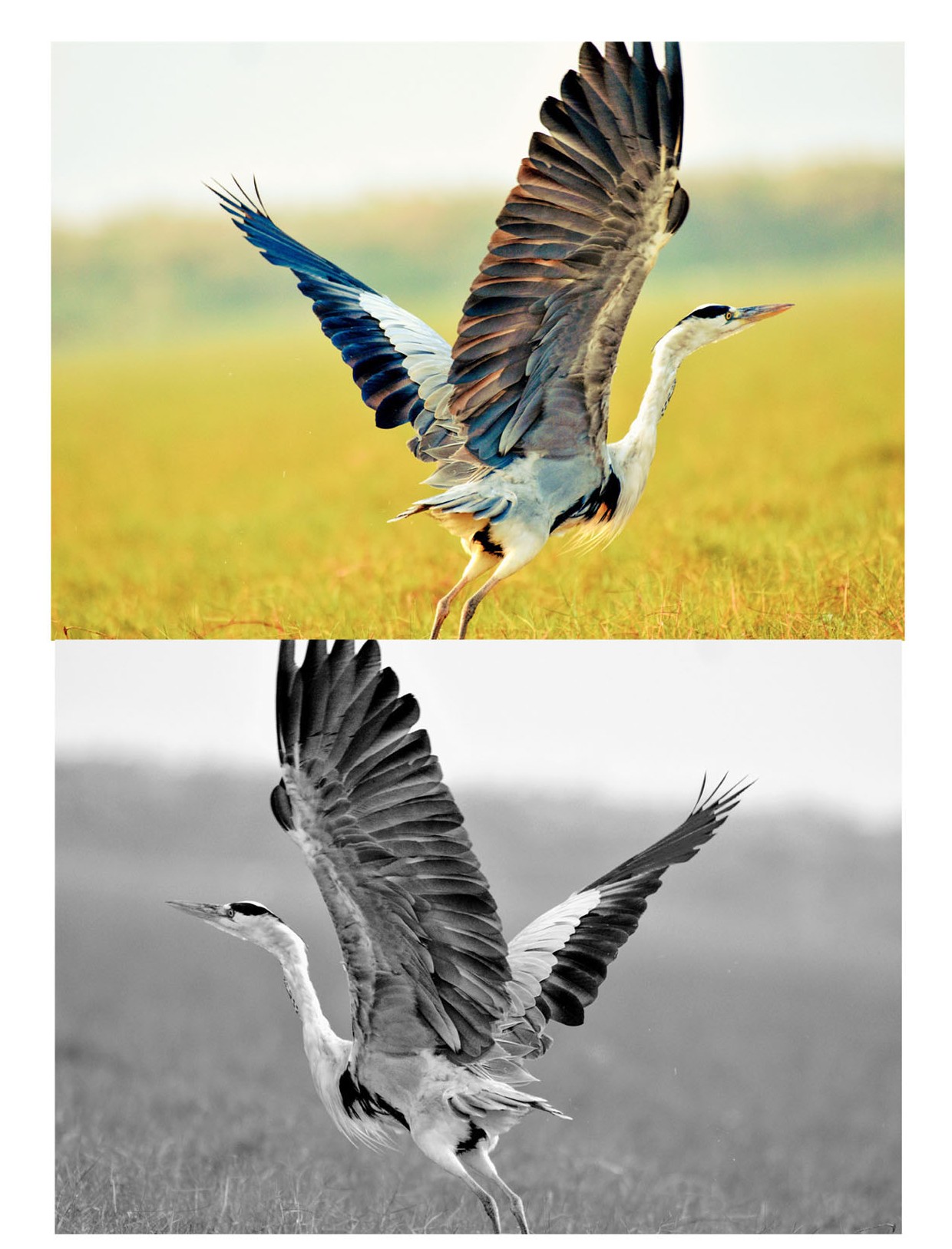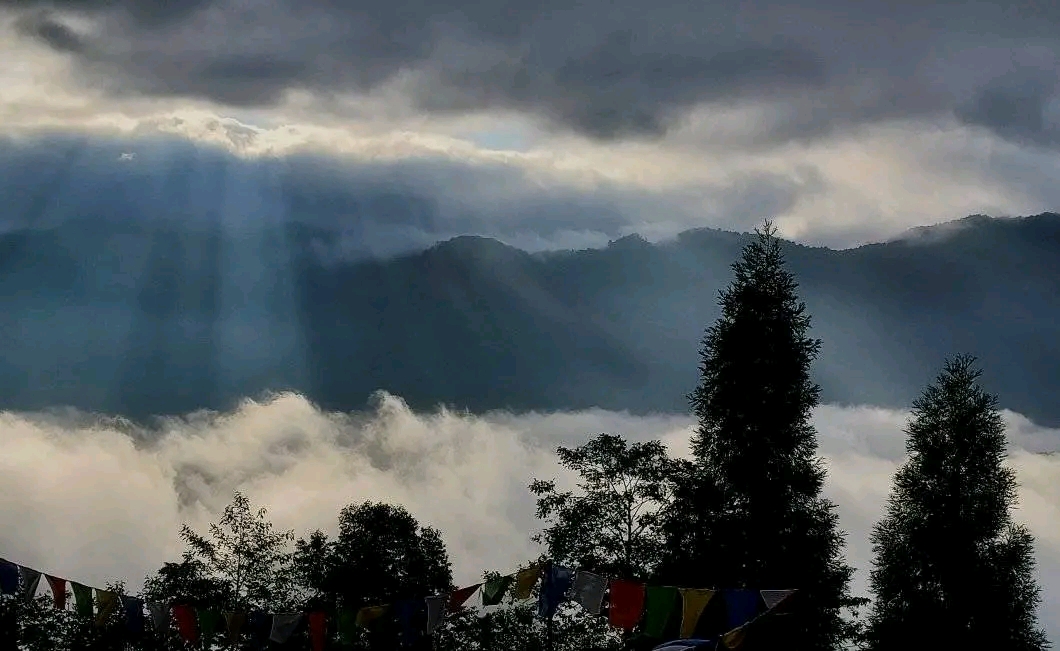A Million Wings
Ever since the talk of Black-headed Ibis slurping up water snakes like noodles hit our ears, we knew we had to visit Mangalajodi at least once. So, when a bird-brother revealed his plans of a road-trip to the same place, we bashfully asked to be included. So, in January 2020, my husband and I, henceforth referred to as the Bonded Pair, hoppped into the car and the long ride began. At any given point of time, winter- migratory bird population in Mangalajodi is counted in lakhs, in the months of November, December and January. Northern Pintail, Northern Shoveler, Ruddy Shelduck, Gargeny, Gadwall, Cotton Pygmy Goose, Common Coot, Black-headed Gull, Brown- headed Gull, Black-Tailed Godwit, Glossy Ibis, Collared Pratincole, Grey Wagtail, Yellow Wagtail, Purple Heron, Black-headed Ibis and River Terns are only a small number of the total migratory species that call Mangalajodi home in winter. And we were on a mission to watch them, learn about them and photograph them.
 Bird on snake, snake around the bird's neck -bird trying to tug it free of water plants - snake trying to stangle bird. And on and on it went, at several places at once. The shutterbugs went berserk. Clicking furiously, shutters snapping like an unending rain of bullets, we captured the dramatic scenes unfolding before our eyes.
Bird on snake, snake around the bird's neck -bird trying to tug it free of water plants - snake trying to stangle bird. And on and on it went, at several places at once. The shutterbugs went berserk. Clicking furiously, shutters snapping like an unending rain of bullets, we captured the dramatic scenes unfolding before our eyes.
Nearby, a duck with a broad, flat bill resembling a flat spoon, was swimming. The Norther Shoveller, from Europe and Central Asia, survived primarily on zooplanktons but occasionally preyed on larger invertebrates.
Pin-tailed Ducks, named after the pin-ended tails, arrive from the Tundra regions and go as far as Sub-Saharan Africa to survive the winters. There were a smattering if Gadwalls and Gargeny, but we didn't venture near them as we had more ground (or water, if I may) to cover.
Kolkata to Mangalajodi: Day 0, 6 am, local time:
The roads were hazy and the windows were all rolled up. The road-trip to Mangalajodi began, in the 1st phase from Rajpur in South 24 parganas , and in the 2nd phase from Sodepur in 24 PGS South. We went up the Bally Bridge and then down the Delhi Road. On and on we drove, stopping for a 30-min brunch at a hotel off the highway. It was almost afternoon when the car entered Bhuvaneshwar city. With smooth roads and beautiful bougainvilea lining the dividers, the drive through the city was worth remembering. 60kms away we entered Khorda district and then the small village of Tangi. It was nightfall. Driving cautiously along a narrow road on the countryside, we reached Godwit Eco Cottage. We quickly unpacked, had dinner and began packing the essentials for the next morning: lenses, notebooks, field guides, pens, goggles, hats, water bottles and snacks.
Mangalajodi, Day 1, 5am: After a hasty breakfast, we drove to the great lake of Mangalajodi. While it is a part of the Chilika Lake, it is a vast expanse of watebody in its own right. As we stepped into the boat and tried to make ourselves comfortable, we spotted a Yellow Bitten, well-camouflaged among green reeds and hoping to catch a snack.
As the boat rowed past fishing boats, nets and people, Moorehens, Grey Swamp Hens, Swifts and Swallows greeted us in large numbers.
And sure enough, there were Black-headed Ibes and water snakes engaged in an enternal tug of war for survival.

Slowly, our boat started to row away. It was time for the most distinctive migratory visitor of the region- the Black-tailed Godwit. Watching them going about their day was a treat to sore eyes.
Some were preening themselves, others foraging for food. And then, standing on one feet, heads tucked under their wings, sleeping, were a host of Black-winged Stilts. Nothing seemed to bother those sleepyheads, even as the small waves from the boat lapped up against them. Only a handful were awake and actively foraging.
Soon it was time for a short lunch break. We headed to the resort, finished eating in a whirlwind and were back in the waters before you could say River Tern.
This time the trip started with a dazzling flock of Glossy Ibis, basking in the sun. Such was the glaze of their dark, colourful plumage, that the glowing sun paled in comparison.
We looked around. There were other boats, other birders, more experienced birders and much better lenses. Cutting through the currents we came to a clearing and our ears picked up the distinctive call of gulls.
Our joy knew no bounds. And the birds hardly paid us any heed.
Our joy knew no bounds. And the birds hardly paid us any heed.
Some flew around in small flocks, while others stood at the edge of the water in narrow strips of grass. River terns flew quite close to the boat, hoping for crumbs thrown from the boat, which we learned was a custom with many bird watchers and photographers.
Large ducks, males with a deep ruddy plumage and a black ring around their necks and females of a lighter hue and without the black ring, but always in pairs, the Ruddy Shelducks strutted their stuff majestically. Seems incredible that such large, heavy ducks could fly, much less come flying from the Palearctic, Mongolia and Western China to winter in India.
Nearby, a duck with a broad, flat bill resembling a flat spoon, was swimming. The Norther Shoveller, from Europe and Central Asia, survived primarily on zooplanktons but occasionally preyed on larger invertebrates.
Pin-tailed Ducks, named after the pin-ended tails, arrive from the Tundra regions and go as far as Sub-Saharan Africa to survive the winters. There were a smattering if Gadwalls and Gargeny, but we didn't venture near them as we had more ground (or water, if I may) to cover.
So lost were we in the many tales of birdwatching from our guide that we didn't realise when the sun had dropped down the horizon. As we made our way back to the shores, the final sightings were made of Citrine Wagtails, and Bronze-Winged Jacanas.
Understandably, we couldn't sleep out of excitement and were up at 3 am to get ready. The two men in our trio went for an early morning walk around the property while I lazed around for some more time. After breakfast, the day began with a grand sighting of a Red-headed Kite or Brahminy Kite which had swooped down to catch a snake. Before getting into the boat, it was decided that we explore the banks. Small and White-breasted Kingfisher, Blyth's Reed Warbler, Red-wattled Lapwing, Yellow-wattled Lapwing were present in large numbers. Later our boatman took us to see Collared Pratincole.
Almost perfectly camouflaged against the ground and grass, they lay, sleeping, resting and just brooding on the meaning of life. Then there were snipes, stints, Little-ringed Plovers, Oriental Honey Buzzard and many other birds we couldn't ID immediately.
Almost perfectly camouflaged against the ground and grass, they lay, sleeping, resting and just brooding on the meaning of life. Then there were snipes, stints, Little-ringed Plovers, Oriental Honey Buzzard and many other birds we couldn't ID immediately.
The boat ride ended soon for we had other plans. We drove to the nearby fields. Black-winged Kite, Shikra, Purple-rumped Sunbird, Tailor Birds, and Prinia flitted from tree to tree and branch to branch. At lunch, we sat sat down to prepare the list of birds we had observed. Within the resort compound itself we then spotted Golden Oriole along with Black-Naped Oriole, Spangled Drongo, Spotted Owlet and Pale -billed Flowerpecker.
Dinner, just like breakfast and lunch, was delicious and filling. Simple dishes, cooked with care and served with love can never go wrong. We were in a bit of a rush as a long, 12-hour return drive lay ahead. Hastily packing up our stuff, we hit the bed early.
Around 7 am next morning, we were on the road again. It seemed slightly longer, slightly more tiring and we wondered if it was us leaving Mangalajodi or leaving a part of us behind in that quaint, little village that made the journey seem a tad more tedious. But all in all, it was an eye-popping experience for that novice bird watcher in me and I still nurse a desire to revisit the place in the near future.
Signing off














Comments
Post a Comment